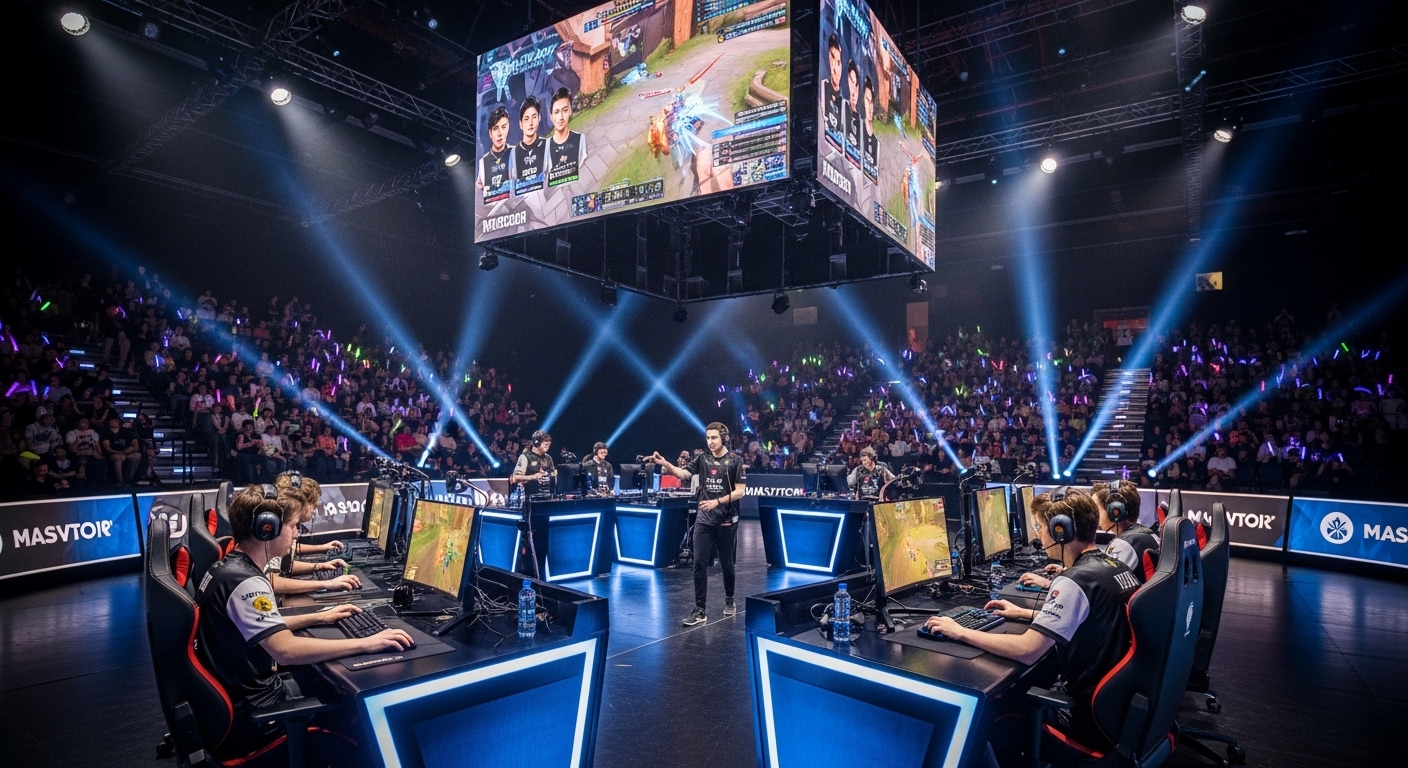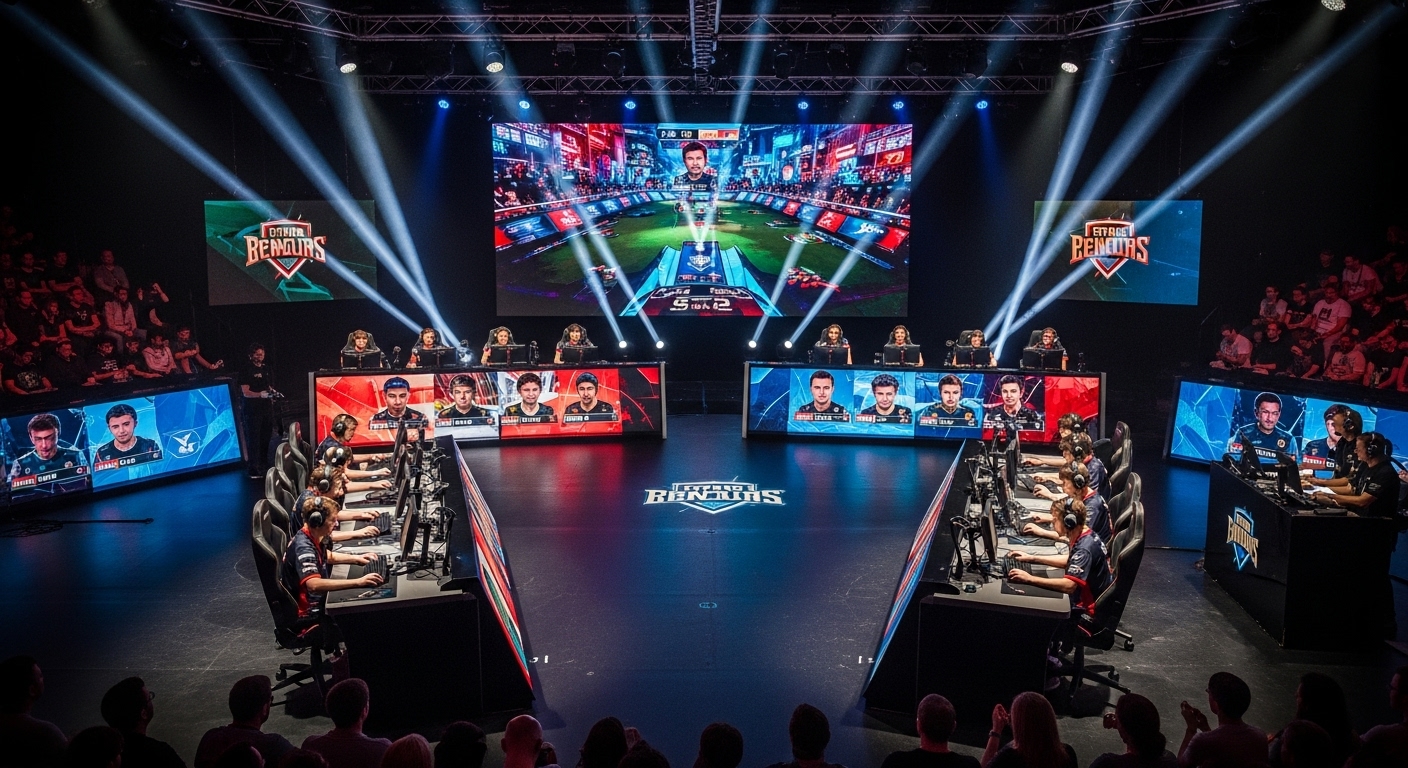Esports, once a niche hobby for gamers, has rapidly transformed into a global phenomenon. What started as small online tournaments and local competitions has evolved into a multibillion-dollar industry, attracting millions of viewers and participants from all over the world. From massive live events to online streams, esports has found its place in the mainstream, offering competitive excitement and entertainment on a scale previously unseen in the world of gaming. This blog post delves into the explosive rise of esports, the driving factors behind its success, and the future of this exciting digital sport.
The Beginnings of Esports: From Arcades to Online Tournaments
The history of esports can be traced back to the early 1990s when competitive gaming started gaining attention. One of the first significant events in esports history was the “Red Annihilation” tournament for the game Quake, which took place in 1997. This event marked the first large-scale esports competition and was broadcasted to an international audience, with the winner receiving a Ferrari as a prize. This early example demonstrated that competitive gaming had the potential to attract a crowd and generate significant interest.
As the internet and online gaming platforms grew in the late 90s and early 2000s, esports began to take shape as a global competition. Games like StarCraft, Warcraft III, and Counter-Strike became the cornerstone of competitive gaming, with players from different parts of the world battling each other for supremacy. The rise of online multiplayer games gave players the ability to compete with each other across vast distances, and tournaments like the World Cyber Games (WCG) and the Electronic Sports World Cup (ESWC) helped solidify the competitive nature of gaming.
The Rapid Growth of Esports: Global Tournaments and Streaming
By the mid-2010s, esports had truly exploded in popularity. The rise of streaming platforms, particularly Twitch, gave players a direct avenue to showcase their talents to global audiences. Esports tournaments like The International (for Dota 2) and League of Legends World Championships began drawing massive viewership numbers, rivaling traditional sports events in terms of viewership.
One of the defining characteristics of esports is its accessibility. Unlike traditional sports, where a physical location and specialized equipment are required, anyone with an internet connection and a gaming device can participate. This democratization of competitive gaming has made it possible for individuals from all over the world to join the esports scene, whether as casual participants or professional athletes.
The prize pools for major esports tournaments have grown exponentially, with The International 10 (the Dota 2 World Championship) offering a staggering $40 million in total prize money. These massive purses have not only attracted the best players but have also made esports a viable career option for many talented gamers. Today, esports athletes are treated like professional sports stars, complete with sponsorships, merchandise deals, and dedicated fanbases.
Esports Games: The Pillars of Competitive Gaming
One of the key reasons for the success of esports is the diverse range of games that are played competitively. Different genres of games cater to various types of players, ensuring that there is something for everyone. Here are some of the most popular esports games:
Multiplayer Online Battle Arenas (MOBAs)
MOBAs, such as League of Legends (LoL) and Dota 2, have become some of the most prominent games in the esports world. These games typically feature two teams of five players who compete to destroy the opposing team’s base, with each player controlling a unique hero with specific abilities. The strategic depth, team coordination, and individual skill required make MOBAs some of the most intense and exciting esports to watch and play.
First-Person Shooters (FPS)
FPS games like Counter-Strike: Global Offensive (CS:GO), Call of Duty, and Overwatch offer fast-paced action and require exceptional reflexes and coordination. Players battle each other in teams, using various weapons and strategies to outsmart and eliminate their opponents. The competitive nature of FPS games, combined with their accessibility, has made them a staple of esports tournaments worldwide.
Real-Time Strategy (RTS)
Games like StarCraft II and Warcraft III pioneered the competitive gaming scene with their focus on resource management, base building, and strategic combat. While MOBAs and FPS games have eclipsed RTS games in popularity in recent years, titles like StarCraft II still have a dedicated following and continue to hold major tournaments.
Battle Royale Games
The rise of Fortnite, PUBG, and Apex Legends has introduced a new format to the world of esports: the battle royale. These games feature large-scale, last-player-standing competition, where players are dropped onto a map and must scavenge for resources while eliminating opponents. The high stakes and unpredictable nature of these games have made them fan favorites in both casual play and esports tournaments.
Fighting Games
Fighting games like Street Fighter, Tekken, and Super Smash Bros. have long been staples in the competitive gaming world. The fast-paced, one-on-one nature of fighting games makes them highly dynamic, with players constantly testing their skills in quick reflexes, combos, and strategy. Events like EVO (Evolution Championship Series) have solidified fighting games as a major part of the esports ecosystem.
The Business of Esports: Sponsorships, Teams, and Media
Esports is not just about the players—it’s also big business. As the industry continues to grow, major corporations, sports organizations, and media companies are investing heavily in esports. Global brands like Coca-Cola, Intel, and Red Bull sponsor esports teams, tournaments, and events, while broadcasters like ESPN and YouTube have dedicated esports programming.
Esports organizations have also emerged as major players in the industry. Teams like Team Liquid, Cloud9, and T1 have signed top players and built global fanbases, much like traditional sports teams. These organizations not only compete in tournaments but also engage in merchandising, content creation, and brand sponsorships. The rise of professional esports leagues, such as the Overwatch League and Call of Duty League, has brought the structure of traditional sports leagues to the esports world, creating new opportunities for players and teams.
In addition, streaming platforms like Twitch, YouTube Gaming, and Facebook Gaming have revolutionized how fans interact with esports content. Streamers and esports athletes regularly broadcast their gameplay, providing real-time access to their skills, personalities, and interactions with fans. These platforms have also introduced new revenue streams through subscriptions, donations, and advertising.
The Role of Fans and Community in Esports
One of the most unique aspects of esports is the level of fan engagement. Esports fans are deeply involved in the community, attending live events, watching tournaments online, and supporting their favorite players and teams. Esports fans are incredibly passionate and dedicated, often forming communities around specific games, players, or organizations.
The sense of community extends beyond just watching tournaments; fans actively participate in online discussions, forums, and social media, contributing to the culture surrounding esports. This fan-driven ecosystem is one of the key factors behind the rapid growth of esports, as it fosters a sense of belonging and engagement that traditional sports can sometimes lack.
The Future of Esports: Continued Growth and Innovation
The future of esports looks incredibly bright. As technology continues to advance, the esports experience will only improve. Virtual reality (VR) and augmented reality (AR) are expected to play a more significant role in shaping the esports landscape, with fully immersive experiences that push the boundaries of traditional gaming. We may soon see esports tournaments hosted in VR environments, where players compete in entirely virtual arenas.
Additionally, the rise of mobile esports, fueled by the popularity of mobile games like PUBG Mobile and Mobile Legends, is opening up new opportunities for global participation. Mobile esports tournaments have become major events in regions like Southeast Asia and are likely to expand in other parts of the world.
Esports will continue to be a driving force for innovation in both the gaming and entertainment industries. With its combination of competitive action, spectator engagement, and technological advancements, esports is poised to become an even more integral part of global entertainment.
Conclusion: Esports – A New Era in Competitive Entertainment
Esports has come a long way from its humble beginnings. Today, it is a global phenomenon that connects millions of players and fans across the world, with professional athletes, tournaments, and a thriving business ecosystem. As technology continues to evolve, the esports industry will only grow larger and more exciting. Whether you’re a hardcore gamer or just a casual fan, esports offers something for everyone—from thrilling competition to cutting-edge entertainment.
As the industry continues to develop, one thing is clear: esports is here to stay, and it’s shaping up to be a major part of the future of entertainment. Whether you’re watching your favorite team win a major tournament or diving into a game yourself, the world of esports is a thrilling and dynamic place to be.



